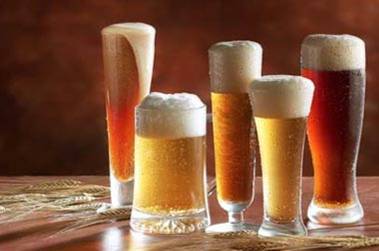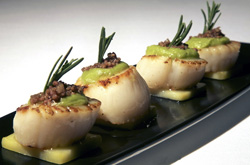
Should you ever go to Spain be sure to enjoy as much of the local cuisine as possible. Nowadays it has a greatly deserved fame, but in truth, Spanish cuisine was not always so popular.
The beginning of the 20th century was not easy for Spain. They had lost most of their colonies by the end of the 19th century and the once that were left they lost after the American-Spanish war. But things got even worse. There was an long lasting agrarian crisis and after the Third Riff War and the Annual disaster tension in the air could have been cut with a knife. All these situations affected the Spanish economy greatly and therefore the food supply.
In the meantime, a boom of gastronomic writing explored. Several authors and journalists began an unprecedented and deep research of Spanish cooking. They didn't only collect recipes, but delved into it's history, culinary concepts and customs. Soon cook books followed, which helped to spread regional Spanish cooking to other areas of the country. Spanish gastronomy was no longer Castilian on one hand and Catalan on the other, or from Extremadura or Valencia. Spanish gastronomy encompasses food from all its regions.
At the time cooks followed the recipes published in «El Practicón» by Ángel, until the 1930's when it fell into disuse. For the first time hundreds of popular dishes that had been passed orally from generation to generation was on print. Fabada asturiana first appeared in a recipe in 1914.
Some cooks gain quite a lot of fame, like Antonio Feito who was the chief cook in Lhardy. The first pressure cooker appeared in Aragon, it was called Olla de Bellvis. Around the end of the 1920's a series of upscale hotels operated Turismo de España, S.A., an state company under the patronage of King Alfonso XIII, which became representatives of a national interest: a gastronomy that is seen as an integrative element of Spanish culture. More books were published and different culinary magazines were born, such as «El Gorro Blanco» (The White Hat) published until 1945 and «La Cocina Elegante» (The Elegant Cuisine).
Local products could be now purchased in different regions in the country, thanks to the improvement of roads and transport and the advance in conservation methods made it possible to store them for longer, which meant that they could be acquired for reasonable prices almost anywhere in Spain, spreading traditional Spanish gastronomy from some regions to others. Migration from rural areas to large cities contributed to the expansion of cooking from the interior areas and the diffusion of their recipes.

Both World Wars contributed to research and inventions related to the conservation of food, under the need to supply food for thousands. Canned products appear. However no great changes occurred in the preparation methods or recipes during the first half of the 20th century. In large cities food was still cooked French style. Beer, a product that existed in Spain since the reign of King Charles I (Charles V, Holy Roman Emperor) but was never much liked by Spaniards gains popularity and slowly substitutes other drinks, much preferred, such as wine. Spanish taste finally varies when the new refrigeration system appear.
War was an important aspect when it comes to changes in Spanish culinary customs of the 20th century. The shortage of various products and the slow reconstruction of the country produced much famine and rationings went on until 1945. Some new dishes and recipes became popular. After the civil war a new phenomenon arose: coffee shops. When the economy started to recover from the different wars that hit Spain and Europe, the gastronomic habits are slowly reestablished as traditional Spanish cuisine is revalued. During Franco's dictatorship Spanish cuisine became a symbol of national identity, and some of the most typical dishes were advertised as "national glories". Some religious traditions in regards to food are reinstated, such as eating fish of Fridays, fasting and abstinence during Lent.
Among some products that became popular during this period was chicken as it became a lot cheaper and it no longer was a luxury, potatoes and pasta. Some new dishes were created during this time that eventually gained some fame, such as macaroni and chorizo and fideuá. New products were introduced, such as shrimp, hake and salmon. Some dishes were imported and adopted by Spanish cuisine: melon and ham from Italy, salad Olivier to name a couple.

Spanish cuisine gained popularity abroad thanks to some writers and tourism. Spain's tourist boom. The thousands who flocked to Spain during the summer demanded some dishes considered as traditional and some even suffered some transportation in order to be pleasant to the tourist' sight. In coastal regions seafood menus appeared, which brought even more tourism, and as a consequence some small and humble towns became huge cities.
Nowadays famous cooks attempt to reinterpret Spanish cooking and traditional recipes are laced with new concepts. Signature cuisine surges and spreads within and outside of Spain's borders, diffusing Spanish food in a different way. The concept of gastrobar is established, where cooks find ways to prepare quality food less pricey than high class restaurants.
A avant-garde cuisine arises with new culinary methods(foams, airs, smoke, spherification, etc.). The most notorious representative of this gastronomy is Ferrán Adriá (owner and chef of internationally acclaimed restaurant El Bulli), who is also associated to molecular gastronomy.
In 2008 Spanish cuisine is declared national cultural patrimony by the government, and here we are. It is likely that Spanish cuisine will maintain some its most traditional aspects while evolving at the same time, while new technologies are created for the processing of food and concept cuisine is permanently renovated. Gastronomy has never moved this fast!